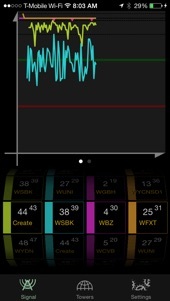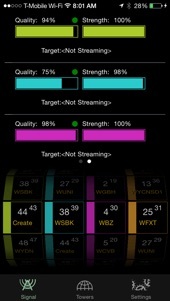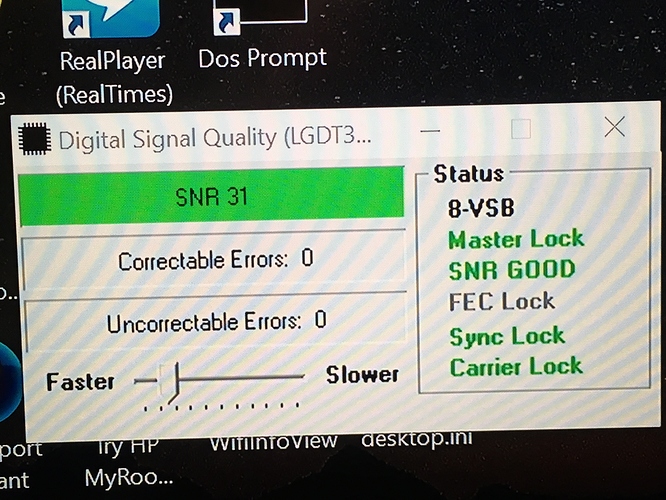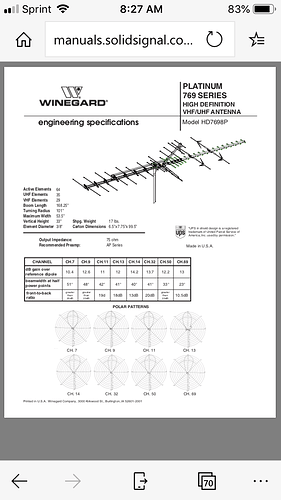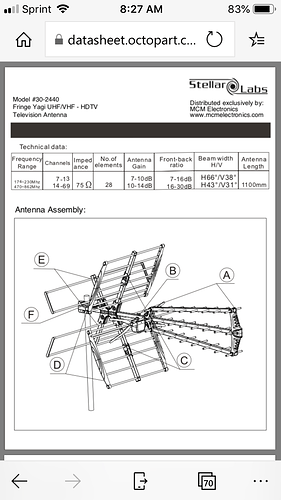Oh, man, black art is right…
I started with a cheap set of RCA rabbit ears with a UHF loop, then a Mohu Leaf- but for indoor usage, my house is a stucco exterior (over a wire mesh) and lathe+plaster interior, without a window access in the direction of the local broadcast towers that are 20 miles away. It’s like living in a Faraday cage.
I went to the attic. I tried a Channel Master CM-4220 bay. Better than the indoor, but the reception in general was still pretty bad. I relocated to the roof, adding a mast and tripod arrangement. The CM-4220 was better than in the attic, but it didn’t do well with two VHF stations (one is a CBS affiliate, the other is PBS). Channel Master’s own support is confused on if that antenna supports hi-band VHF…so…
Next was a Winegard Flatwave 6550- more of a multi-directional, amplified unit. Better, but still spotty reception, with lots of dropouts. It should be noted that the towers are in the same compass direction (within 5 degrees of each other) and the same 20 mile distance- so not like I was trying to pull in signals from opposite locations… Next was the ANT751- even better, but inconsistent on two stations. I then started focusing on the problem stations, looking at signal strength movements on the reporting from various televisions. The path to the towers from my roof takes me through a neighbor’s ~70’ high sycamore tree, about 50’ away, and as wide. The signal bounce and reception issues were multipath related (the reception is rock solid in the winter, but spring summer and fall is another matter).
Not knowing that there is no real antenna cure for multipath issues, I started focusing on the coax plant- I re-ran coax leads to shorten them up, updating splitters (and removing some), mapping out insertion losses on each lead. I torqued down all of my coax connectors, and added terminators to any open ports in my plant. I added a channel master Titan 16dB preamp at the antenna- but at that range and distance I was likely overdriving, and it wasn’t curing the multipath issues.
I went to a higher gain yagi, the Channel Master CM-2018, and added a rotor box to save on trips up to the roof. Still suffering with multipath issues.
Finally, I removed the pre-amp. I have some very long coax runs from the roof, but I made up for those losses using a distribution amplifier as a powered splitter. I went back to the Antenna751, and rotating it slightly off angle, I was able to minimize the reception issues from multipath, as the likely weaker reception lobe path of that antenna helps to reduce the risk of detecting signals coming through the offending tree. I’m resigned to periodically having to move the antenna a bit to compensate on windier days, but at least the rotor box works well.
I’d also note the issues are more noticeable on the Tablo and Tivo tuners (I have both DVR systems in use- that’s another story), but much less of an issue when going directly to the TV. That said, while there is no information to support this from Tablo, when I changed from the old 4-tuner model to a 2 tuner Tablo 64, the reception is much stronger from the same antenna setup.
The Ant751 is a reasonable solution for me, but I’ve been round the map in trying to find the best solution.
